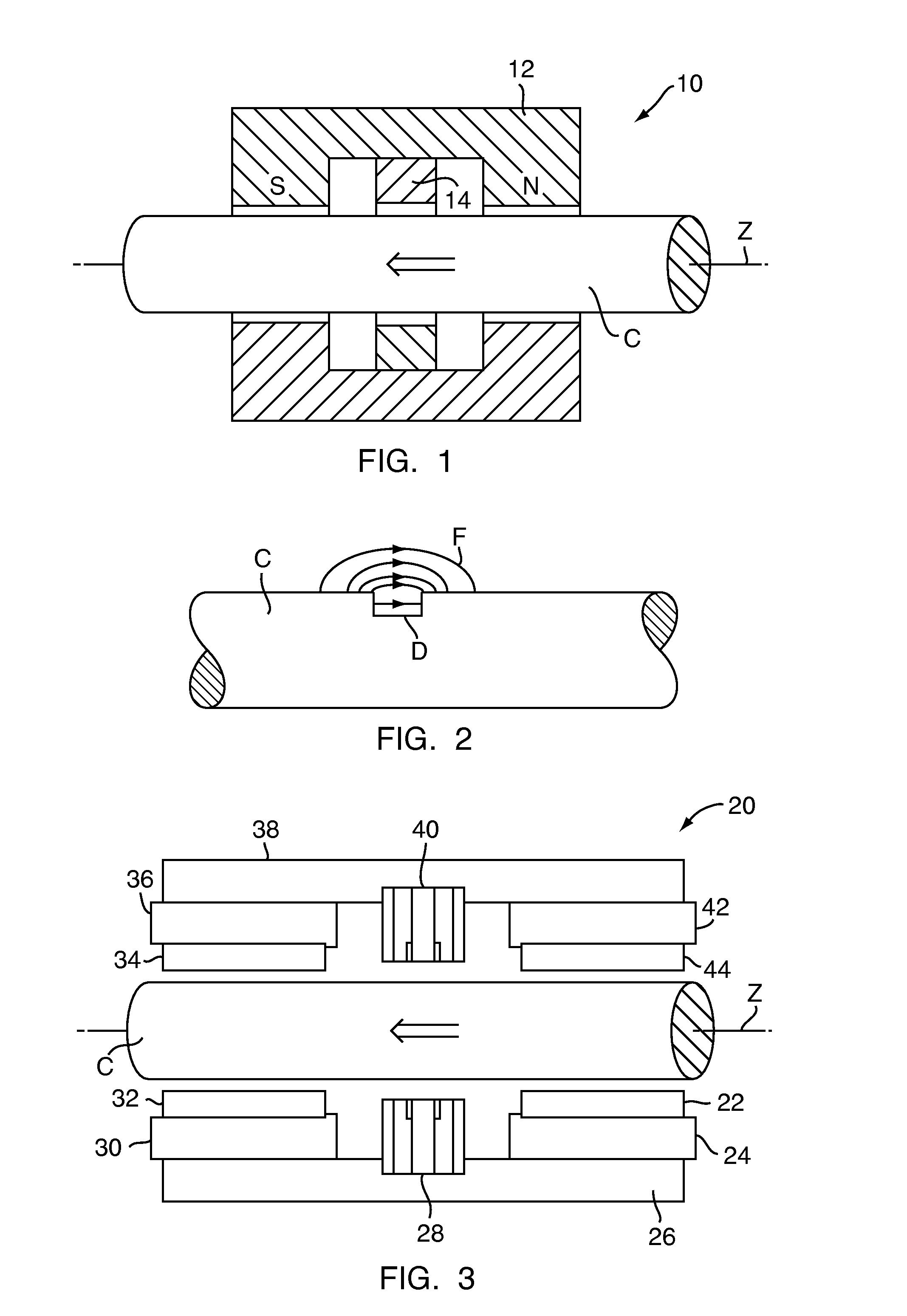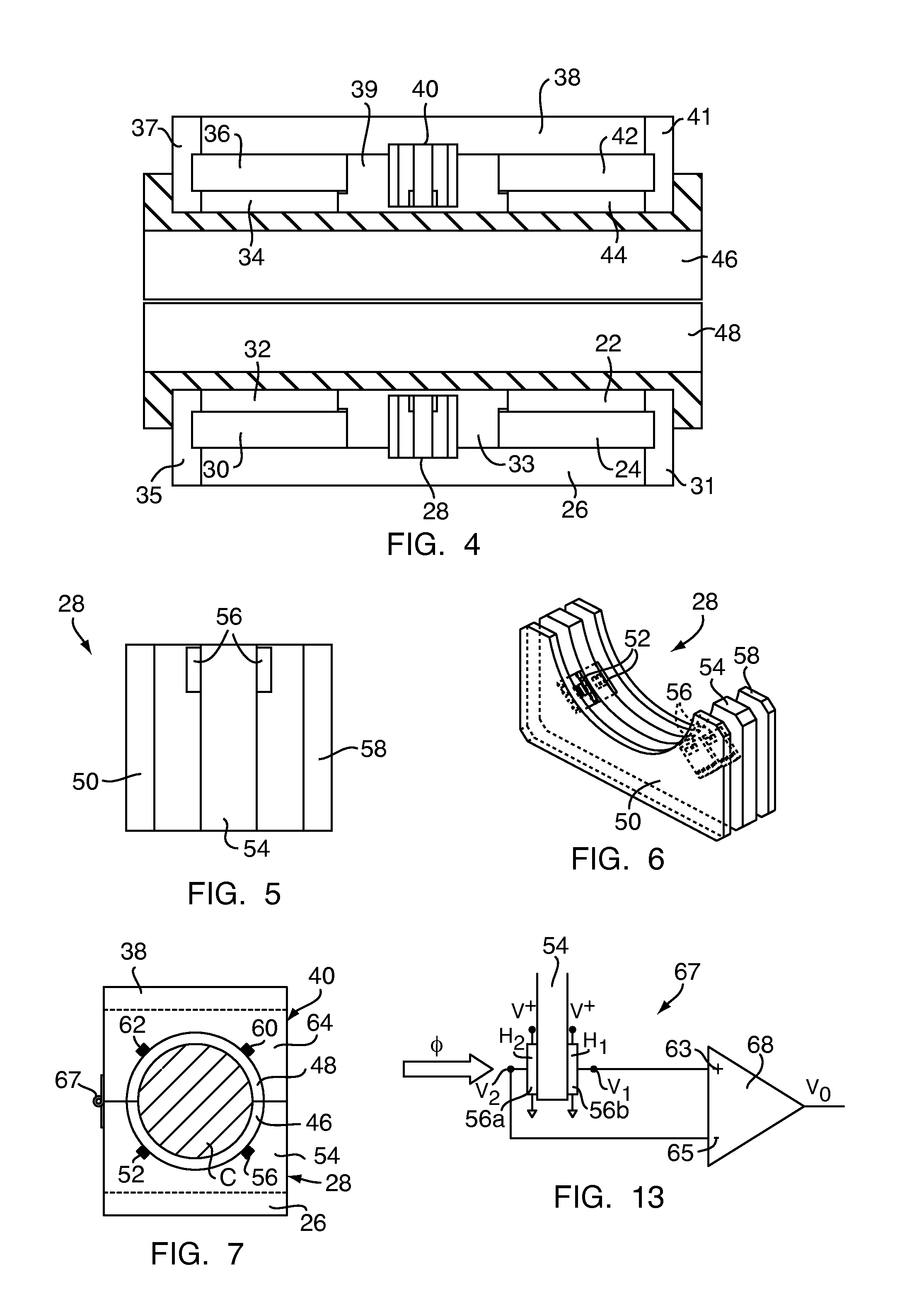Magnetic inspection device
a magnetic inspection and non-destructive technology, applied in the direction of magnetic field measurement using galvano-magnetic devices, instruments, material magnetic variables, etc., can solve the problems of reducing the resolution of generated signals, limiting the application of devices, and the bulk and weight of most devices, so as to reduce secondary flux
- Summary
- Abstract
- Description
- Claims
- Application Information
AI Technical Summary
Benefits of technology
Problems solved by technology
Method used
Image
Examples
Embodiment Construction
[0033]FIG. 1 illustrates a section of a magnetic inspection device 10 for nondestructively detecting loss of metallic cross section in elongated ferromagnetic objects such as but not limited to a wire cable C. Loss in metallic cross section can occur due to abrasion through use, corrosion, and also due to local discontinuities such as fractures or breakage of individual wires on the exterior surface of the cable C or internally. The magnetic device 10 may be used to inspect cables C or the like, either in the manufacturing process or in a working environment without removing the cable C from its normal operating position. The magnetic device 10 may also be used for inspecting other types of elongated, magnetically permeable objects, such as pipes, rods, bars, billets, storage tanks, hulls, and the like.
[0034]The magnetic device 10 is comprised of a permanent magnet or magnets 12 for inducing a saturated magnetic field axially through the cable C in the longitudinal direction. The pe...
PUM
| Property | Measurement | Unit |
|---|---|---|
| supply voltage | aaaaa | aaaaa |
| magnetic inspection | aaaaa | aaaaa |
| magnetic flux | aaaaa | aaaaa |
Abstract
Description
Claims
Application Information
 Login to View More
Login to View More - R&D
- Intellectual Property
- Life Sciences
- Materials
- Tech Scout
- Unparalleled Data Quality
- Higher Quality Content
- 60% Fewer Hallucinations
Browse by: Latest US Patents, China's latest patents, Technical Efficacy Thesaurus, Application Domain, Technology Topic, Popular Technical Reports.
© 2025 PatSnap. All rights reserved.Legal|Privacy policy|Modern Slavery Act Transparency Statement|Sitemap|About US| Contact US: help@patsnap.com



